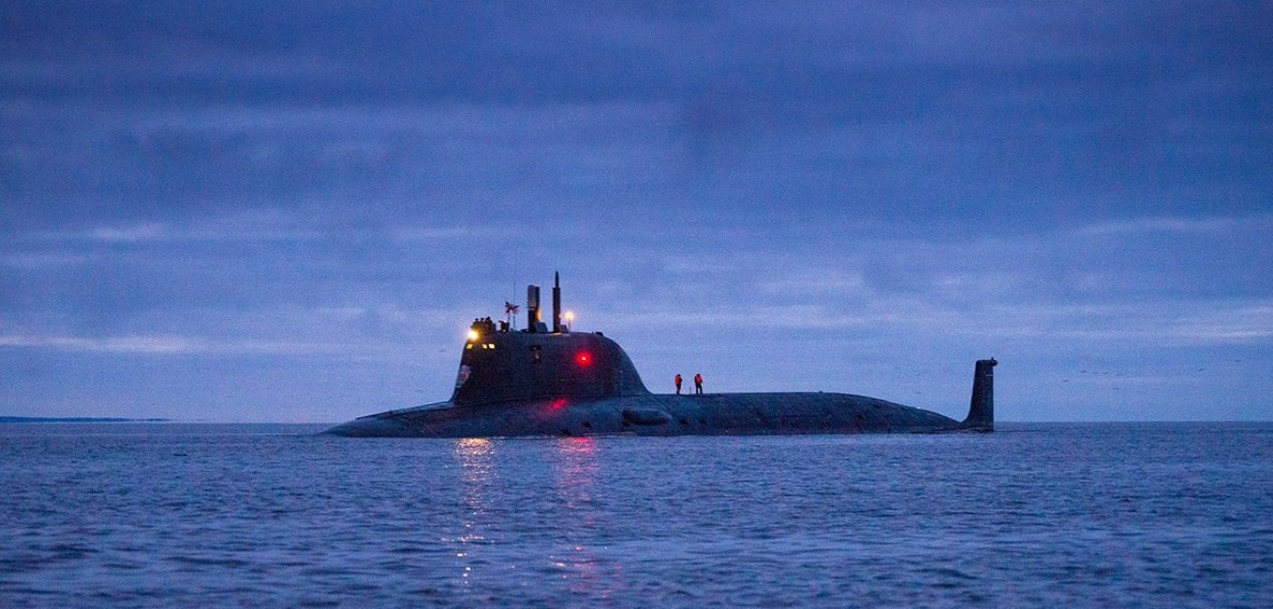Despite a rude jolt to its naval fleet in the ongoing Ukraine War, the Russian Navy has been projecting power through its submarine forces.
State news agency TASS reported, citing the Russian Navy’s recently published press release, that the Russian Navy deployed “Novorossiysk” and “Dmitrov” to conduct a training duel in the Baltic Sea, showcasing the cutting-edge capabilities of its diesel-electric submarines.
The statement from the service stated: “In the designated area of the Baltic Sea, after the completion of anti-submarine maneuvers, the crew of DEPL (Dizel’naya Podvodnaya Lodka or Diesel-powered Submarine) “Novorossiysk” carried out a torpedo attack with the use of practical ammunition (without a warhead).”
The submarines were pitted against one another. The press service reported that the submarine crews practiced combat maneuvering, evading enemy attacks, and combat organizations of intra-ship service during training and combat tasks in the anti-submarine exercise.
They also conducted a series of preparatory exercises and measures to detect and track the submarines of a conditional enemy.
Following their torpedo-launching exercise, the submariners proceeded with their scheduled combat training exercises in the Baltic Sea.

The drills in the region are significant as they come against the backdrop of rising tensions between Russia and NATO states in the Baltic region. Last month, for instance, Russia attempted to change the maritime border in the eastern Baltic Sea, triggering fresh tensions with NATO. However, the draft was reportedly deleted later.
Interestingly, the Kremlin has turned to its submarine force to project power and send a message to its adversaries. This became apparent when Russia’s Kazan, a nuclear-powered submarine, visited Cuba along with other vessels for a scheduled military drill in the Caribbean.
The Russian nuclear submarine came close to the US coast on its way to its destination. From Norway to Cuba, the Russian flotilla, led by frigate Admiral Gorshkov and equipped with Zircon hypersonic missiles, was monitored by a jittery NATO P-8 ‘Poseidon’ anti-submarine aircraft.
The submarine was also spotted off the western coast of Scotland while on its way to Cuba. HM Naval Base Clyde at Faslane, on Scotland’s west coast, is home to the UK’s nuclear submarines and other Royal Navy vessels.
The West, including the United States, dismissed concerns about the Russian submarine’s proximity. The presence of Russian nuclear subs so close to the US had raised suspicions about a potential spying mission.
The timing of the port call, under the US watch, came amid escalations in the ongoing Ukraine-Russia conflict, with NATO countries increasing their stakes in the war. Also, the 145-kilometer distance between Cuba and the US from their closest points did not particularly relieve concerns.

Russian Nuke Submarine ‘Irkutsk’ Enters The Sea
The nuclear submarine (APL) “Irkutsk” of project 949AM of the Pacific Fleet (TOF) went for factory sea trials after repair and modernization, reported TASS on the sidelines of the International Naval Salon (IMVS) “Flot-2024”.
An unknown source in the shipbuilding industry reportedly informed TASS, “Repair and modernization of the Irkutsk submarine at the Zvezda plant in Primorye is almost completed. The boat went to the factory sea trials.” Neither TASS nor EurAsian Times could independently verify these claims.
Earlier, another source told TASS that the submarine “Irkutsk” was supposed to go for sea trials in June. At that time, the source said there was anticipation that the submarine would perform test launches of the Zircon hypersonic missile from the surface and underwater position.
Irkutsk’s history is noteworthy since it was put through state examinations and sea testing in 1988 before becoming a member of the Northern Fleet in 1989. It carried out the first-ever P-700 Granit anti-ship missile launch in 1992.
"Repair and modernization of the Irkutsk nuclear submarine at the Zvezda plant is almost complete.The submarine has gone to sea for factory sea trials,"a source told TASS.
In 2024,it is planned that during state trials the submarine will test launch the Tsirkon hypersonic missile pic.twitter.com/huUlA3k71W— Massimo Frantarelli (@MrFrantarelli) June 26, 2024
Nonetheless, it was sent back to the Zvezda shipyard in 2001 for maintenance. Officially, repairs started in 2008 (though some sources state they started in 2001), with particular emphasis on regaining technological functionality. Plans to modernize the Granit (a naval anti-ship cruise missile) system first surfaced in 2013. The goal was to swap it out with the 3M22 Zircon hypersonic missile and the P-800 Onyx supersonic anti-ship missile.
The upgraded submarine “Irkutsk” of Project 949AM is expected to carry more than 30 cruise missiles, including “Kalibr-PL”, and “Onyx”, as well as the hypersonic “Zircons”. The report stated that the presence of a particular type of missile on board will be determined by the tasks facing the submarine. The vessel will receive more than 30 “Physicic-2” torpedoes as self-defense weapons.
- Contact the author at sakshi.tiwari9555 (at) gmail.com
- Follow EurAsian Times on Google News




